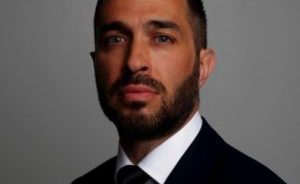The group – already well-established in the UK, with nine branches across the south of England plans to use the new platform to roll out its stockbroking and discretionary management globally. Central to this is its asset allocation process.
The process will be little-changed for the offshore market, though it is possible that the fund selection may be tweaked.
The process now falls under the stewardship of investment director Tim Cockerill and his team, which includes Ben Maitland as head of equities research, and Ian Entwisle, head of fixed interest.
The group recently appointed John Betteridge to chair its asset allocation committee.
Betteridge was formerly CIO of Prudential UK’s insurance division, overseeing assets in excess of £150bn.
His appointment reflects the group’s drive for growth.
Diverse client base
The Rowan Dartington client base is diverse, incorporating individuals, companies, charities and trusts.
In building the asset allocation, the group works with five levels of risk that can accommodate most of these clients, though it offers bespoke portfolios as well.
The risk level is largely determined by the exposure to equities. The low-risk model, for example, would have no more than 32.5% in equities, with a minimum of 17.5%.
They devised it this way because, as Cockerill says: “The weighting in equities is, in the long term, what gives you the most potential for growth. This is also where the greater risk lies and the higher volatility.”
Sense check
The group also looks at the WMA benchmarks, which fit ‘reasonably well’ with the risk categories, says Cockerill.
“These act as a guide,” he says. “It doesn’t mean that we follow their allocation dogmatically. It is a sense check – if we have 20% in Europe and the WMA indices only have 5%, we would reassess.”
The process is well established, so most of the asset allocation team’s efforts are focused on adjusting existing allocations and adapting to the current market conditions.
Central to this are the monthly asset allocation meetings.
Cockerill says: “We will always have an asset allocation already in place, so our discussion is around how that might change. We look at where we are currently, and what we said a month ago at the last meeting.
“We look at how that has played out and either congratulate ourselves, or try and work out whether something was wrong with our analysis.”
Cockerill will look at the movement of each individual market, otherwise he believes it is easy to lose track of how investments are performing: “We always have a number of items on the agenda and each one of the 10 participants is free to add items to it.
“Often, we are news-led. So we might start with reviewing the US earnings season, or the findings of the Fed’s beige book (which gathers anecdotal evidence on economic conditions in the US from business leaders, economists and market experts).”
The output from the asset allocation meeting feeds through into the model portfolios. That said, the group does not believe in radical shifts in its asset allocation.
For example, the group has been cutting back on its fixed income exposure this year on the basis that much of the market offers little value for investors. But within a Balanced Medium Risk portfolio (the group medium risk allocation), this has only amounted to a 2.5% shift from bonds to equities over the course of 2014 so far.
Cockerill says: “Within the equity allocation, we will look at different markets and opportunities. Again, we don’t make significant shifts. We had 5% in Japan at the start of the year and now have 2.5%, but that is the biggest move we’ve made all year. We don’t think making huge swings in allocation works very well.”
The group analyses all the major economies, assigning each a negative, neutral or positive rating. It goes through the same process for the equity markets.
Cockerill is clear that the two do not necessarily match: “We have been neutral on the European economies for some time, but are positive on European equities.”
This is largely a function of valuation.
Examine metrics
In determining the weighting in other asset classes, Cockerill and his team will look at metrics such as commodity prices, inflation, interest rates, property prices and currencies. Each will be factored into the group’s analysis.
Whether this leads to action will largely depend on the current positioning of the portfolios.
For example, at the most recent meeting, the group adjusted its assessment on gilts from neutral to negative on the basis of the recent strong performance of gilts, plus the increasing likelihood of interest rate rises. However, the majority of the portfolios held nothing in gilts anyway, so there was no need for any action.
On the other hand, the group also shifted its view on the outlook for European economies, in the wake of weaker inflation figures. This did necessitate some adjustment.
Some of the group’s analysis will not directly translate into asset allocation positions. For example, Cockerill has been positive on the dollar for some time, believing it will appreciate versus the other major currencies, but hasn’t taken any explicit positions to reflect that view.
“Certainly it is good for US assets and there are lots of UK companies with overseas holdings that will benefit from a stronger dollar,” he said. “However, we haven’t historically hedged currency. For us, the key thing is to be aware where our clients’ exposure lies and whether they will benefit or not.”
Geopolitical upheaval
Geopolitical issues have been on the agenda recently, despite markets’ apparent ability to shrug off the escalating problems in Ukraine and the Middle East.
Cockerill says: “We are not military/political experts and, as such, it is difficult to judge the impact of what is going on. However, we can see the impact on individual countries, such as Russia. As such, we looked at the emerging market funds we held to check their level of Russian exposure. As it was, very few of them had any exposure at all. As a result, we are just keeping an eye on it for the time being.”
In terms of current positioning, the group remains underweight fixed income, particularly government bonds.
Cockerill says: “Interest rates will rise at some point and this will be bad for fixed income markets. This is a long-held position – we have steered clear of gilts for the past 12-18 months in favour of corporates, which continue to offer better value.”
Cockerill believes that the current environment does not naturally lend itself to large asset allocation decisions.
He is overweight Europe, but not significantly, and neutral on Japan.
He has a higher weighting to Asia Pacific and emerging markets in the group’s higher risk portfolios, believing that these markets currently offer a reasonable balance of long term growth prospects and attractive valuations.
New era
The offshore expansion of Rowan Dartington represents a new era for the group.
The group has had to weather some change in personnel over the past year, after co-founder and head of business development Andrew Morris left to set up a new discretionary service at RC Brown Investment Management.
However, the asset allocation process has been consistent through these changes and provides a robust platform for its global ambitions.




